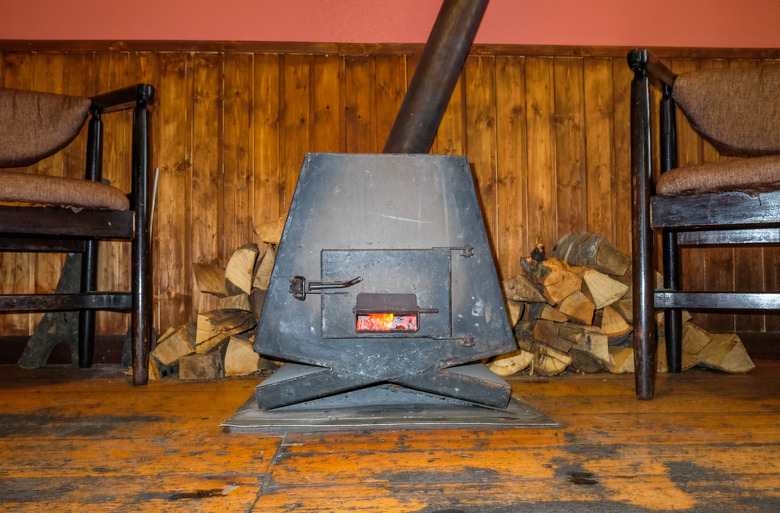How To Use A Cast Iron Pot Belly Stove
A cast iron potbelly stove is a small but mighty wood- and coal-burning stove. Invented in the 19th century, it remains a popular option today for heating a home without the use of electricity.
Anatomy of a Potbelly Stove
Anatomy of a Potbelly Stove
A potbelly stove stands upright and has a round middle and slightly smaller top and bottom. It gets its name from this bulging belly. The heavy cast iron material holds and radiates heat, making it possible to heat an entire room from this modest stove.
A cast iron potbelly stove sits on raised feet. It has a bottom pull-out door or drawer to give you access to the ash pile. This door also typically has an air vent to allow you to adjust the air intake to the stove.
Moving on up, you'll encounter the round belly of the stove and the main door. This is where you add either your wood or your coal to burn. This door also has an air vent to help you adjust air flow in order to produce a healthy and hot fire. The top of a potbelly stove is usually flat and has a cooktop. A pipe coming out of the top of the stove vents smoke out of your home.
Why Cast Iron Potbelly Stoves Are Popular in Emergencies
Why Cast Iron Potbelly Stoves Are Popular in Emergencies
Potbellies are one of the old coal-burning stoves that you might picture in a quaint one-room schoolhouse. So, why do they remain popular today? In short, they offer excellent heating efficiency and also make a great backup in emergencies. Here's why:
- In an emergency setup, you can vent the pipe out of a window and pack the remaining open space with mineral wool.
- Potbelly stoves can burn either coal or wood, so you can use whichever is available to you.
- The cooktop provides an easy way to prepare food even when the power goes out.
Of course, installing a potbelly stove before an emergency strikes means you can enjoy your stove with the safest installation and also have plenty of time to become comfortable using it.
How to Build a Fire in a Cast Iron Potbelly Stove
How to Build a Fire in a Cast Iron Potbelly Stove
Now for the fun part: building the fire. Start by making sure the flue on your chimney pipe is open. The flue handle should be straight up and down. Next, open the bottom door in order to allow air to flow up into the main chamber, and you're ready to build a fire.
Always Start With a Wood Fire
Always Start With a Wood Fire
Regardless of whether you plan to burn wood or coal, you need to start with a wood fire. That's because coal burns at a higher temperature, and you need to create some serious heat to get the coal fired up.
Add wadded-up newspaper to the main chamber and then add small sticks. Add small logs on top of that. The wood you use should be dry, otherwise it will not burn. Using a match or a lighter, light the newspaper first. This will burn quickly and spread the fire to the kindling, which will burn a little slower and spread the fire to the main log.
Close the door and adjust the air vents in order to feed the fire plenty of oxygen. Close the bottom door but make sure its air vent is open too. Check the fire now and then, adding new logs when needed. Add coal, if desired, once the main log starts to burn.
Stove Safety Considerations
Stove Safety Considerations
Always check that the flue is open. A closed flue will send smoke straight into your home. Smoke inhalation can quickly overpower you. Stay safe and always check your flue.
Install the potbelly stove on a nonflammable surface and hearth, such as a brick, to reduce the risk of flying embers causing a fire.
If installing the chimney pipe yourself, be sure to follow detailed plans in order to ensure that it vents properly and that the wall is insulated from its heat.
